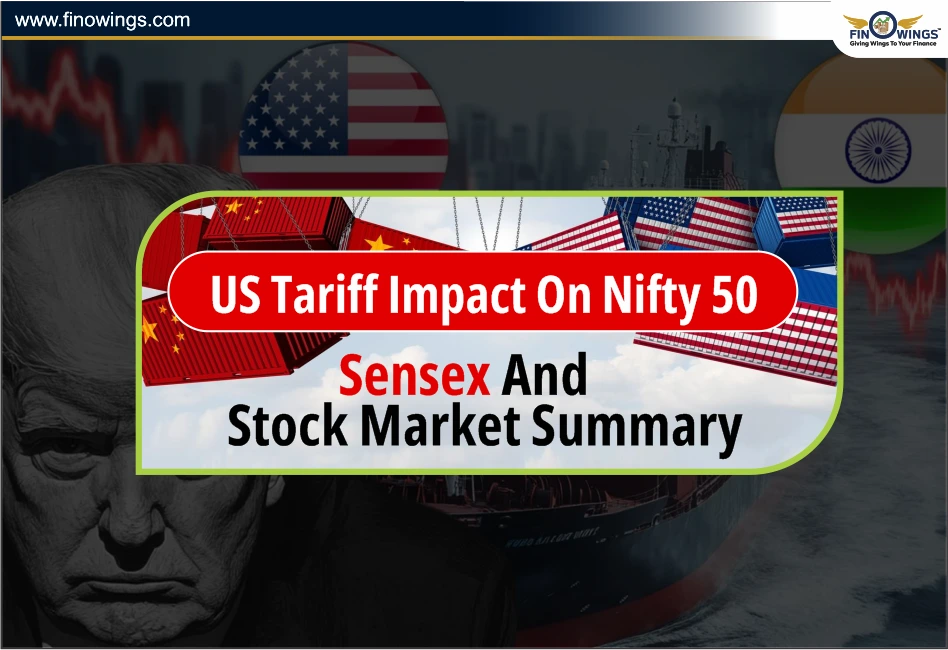Home >> Blog >> India Q2 GDP growth hits 5.4%, more pressure on RBI to cut rates
India Q2 GDP growth hits 5.4%, more pressure on RBI to cut rates

Table of Contents
What caused India's Q2 GDP Growth to fall to 5.4%? Detailed Analysis
India's GDP growth in the second quarter (Q2) i.e. India Q2 GDP growth rate slowed to a near two-year low of 5.4% due to weak performance in manufacturing and mining, as well as poor consumer expenditure, with agriculture and construction being the only bright spots. The weak growth will put RBI in a tight position to cut rates at their December meeting. They will, however, have to weigh the calls for rate cuts against pressure from Government and industry with that of the requirement to leash inflation that is already away at more than 6.2%.
Finance Minister Nirmala Sitharaman and Commerce Minister Piyush Goyal have been the loudest voices within the Government propounding demand for rate cuts, which RBI Governor Shaktikanta Das has been vigorously resisting because Mr. Das wishes to see consumer inflation go down durably to the targeted 4%.
Q2 GDP Growth Rate
The Indian Gross Domestic Product growth rate indicates a significant decline from the 8.1% growth recorded in the July-September quarter of 2023-24 and the 6.7% in the previous quarter of this fiscal.
The October-December quarter of 2022-2023 saw the previous low GDP growth rate of 4.3%. In the second quarter, the RBI had forecasted a growth rate of 7%.
Private final consumption expenditure, the most significant indicator of consumer spending among the latter two periods, grew by 6% in the quarter ending in September, and lowered from 7.4% in April-June 2024, based on Government data made available earlier today.
Key Reasons for Low Q2 GDP Growth
Though there are several reasons for India GDP growth (q2) that hit a 7-quarter low, there are main contributors for this which are discussed below:
-
Manufacturing which is considered a key driver of economic growth grew only 2.2% in the newest quarter, which was 7% in the previous close.
-
Rising Inflation
-
Wake wage growth
-
High borrowing costs
-
Dampened Urban consumption.
Detailed video:
India Q2 GDP Data
The Crucial Indian Q2 GDP Data based on the industry is mentioned below which shows the changes yearly and quarterly wise.
Mining Growth- At -0.1% Vs 11.1% (year-on-year) and Vs 7.2% (quarter-on-quarter)
Manufacturing Growth- At 2.2% Vs 14.3% (year-on-year) and Vs 7% (quarter-on-quarter)
Electricity Growth- At 3.3% Vs 10.5% (year-on-year) and Vs 10.4% (quarter-on-quarter)
Construction Growth- At 7.7% Vs 13.6% (year-on-year) and Vs 10.5% (quarter-on-quarter)
Growth in Trade and Hotels: 6% compared to 4.5% year-over-year and 5.7% quarter-over-quarter
Growth in Finance and Real Estate: 6.7% compared to 6.2% year over year and 7.1% quarter-over-quarter
Growth in Public Administration and Services: 9.2% compared to 7.7% year-over-year and 9.5% quarter-over-quarter.
Indian GDP Data at Glance
Why Q2 GDP Data Matters?
The recent data show that increasing challenges face India's economy, questions, and sustainability of its growth momentum in recent years.
Consumer Crunch: Private consumption, which comprises 60% of GDP, fell to a 6% growth rate, compared to 7.4% in the preceding quarter, owing to weakened demand for both durable and non-durable goods.
Policy Pressure: The RBI has more pressure towards a lower rate regime to encourage investment and demand with this being repeated since it held on to its benchmark repo rate of 6.5% from May 2020.
Political Stakes: Recent political promises by Modi's government of boosting expenditures meant for unemployment and uneven growth are only worsening the situation. A lot is hence at stake with major political and budgetary milestones coming up.
Experts’ Opinion
"However, the GDP growth for the second quarter which is disappointing at 5.4 per cent is maintained. But projection for overall FY25 at 6.5 % is not at risk."- V Anantha Nageswaran, Chief Economic Advisor to the Government of India.
“This sharper-than-expected dip in Q2 growth tilts risks downward for the current fiscal’s growth target of 6.8%” - Aditi Nayar, Chief Economist, ICRA.
What’s Next?
-
Economists are divided on the path forward. Some predict that GDP will accelerate in the second half of the fiscal year, but others warn that the rebound may be gradual and uneven.
-
Now, one thing is clear everyone will be watching the RBI's next monetary policy announcement on December 6.
-
The weaker-than-expected GDP figures caused bond markets to react quickly, and as investors priced in the prospect of a rate decrease, rates fell. The RBI, which has held its benchmark repo rate steady at 6.50% since May 2020, faces a delicate balancing act between fostering growth and containing inflation.
-
Rate cuts in early 2025 are more possible, according to some, if inflation returns to the central bank's 4% target. Short-term rate stability is anticipated by analysts as the central bank assesses inflation trends. But if inflation continues to decline, a rate cut as early as February would be upcoming.
(Inputs taken from Times of India, Telegraph India, cnbctv18. )
Conclusion
The fall in India's Q2 GDP growth from 5.4% reveals many lack and poor Government policies such as slow manufacturing, high inflation, and a dip in consumer spending. It is true that agriculture and construction have shown strong performance, but serious questioning of the future prospects has resulted in a slowing momentum of the overall economy.
On the one hand, the Reserve Bank of India would be pressed into deciding between lowering rates to support demand and controlling inflation; concerning that, however, experts continue to be divided on the pace of recovery. Some are upbeat about the second half, while some warn of caution. Political pressures and a broad view of policies will determine how the slowdown will be handled.
Close eyes will be kept on the RBI meeting on December 6 about rate cut decisions, while a careful balance has to be set to maintain growth without causing higher inflation. The road ahead seems tough but possible with reasonable measures.
Disclaimer: Data taken from various news articles and websites that are available in the public domain. No buy or sell recommendation. No trading or investment advice is given. The content is purely for educational and information purposes only. Always consult your eligible financial advisor for investment-related decisions.




















